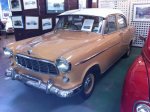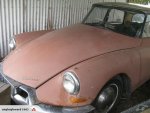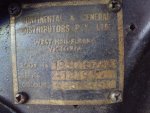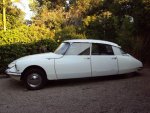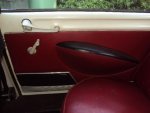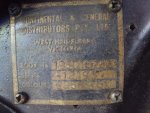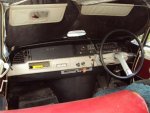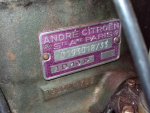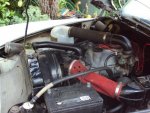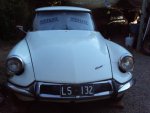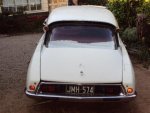Hi all, this is Yves from Paris, France.
Some of you helped me to build this page about the ID19 Parisienne from Heidelberg, which is very very exotic to me:
http://www.nuancierds.fr/DT ID19 Parisienne.htm
I wonder if we could go a bit further about colour codes.
Here is a list of available Dulux colour codes for the ID parisienne, coming from previous exchanges on Aussiefrogs:
0070 Black
4318 Angora White
4319 Lido Blue
4320 Curaçao
4322 Vert Reims
4323 Boulogne Green
4981 Mistral Grey
4988 Alouette Ivory
5376 Carmen Rouge
5394 Olive Green
5761 ?
9936 Charcoal Grey
Question 1:
Do you think this list is exact and complete? Does a Dulux document exist about this topic?
Question 2:
The chassis plate has also 3 figures in front of the colour code:
For example, 222 00070 is a black ID Parisienne featured in "original DS" from Reynolds, with two tones red and white interior.
Do you think that these figures (222, 223, ...225) has a particular meaning? (the seats colour maybe?)
Do you have seen numeric combinations that you know original, that might help to imagine what was this code meant for?
Do you have a theory about this?
Thanks!
Yves
Some of you helped me to build this page about the ID19 Parisienne from Heidelberg, which is very very exotic to me:
http://www.nuancierds.fr/DT ID19 Parisienne.htm
I wonder if we could go a bit further about colour codes.
Here is a list of available Dulux colour codes for the ID parisienne, coming from previous exchanges on Aussiefrogs:
0070 Black
4318 Angora White
4319 Lido Blue
4320 Curaçao
4322 Vert Reims
4323 Boulogne Green
4981 Mistral Grey
4988 Alouette Ivory
5376 Carmen Rouge
5394 Olive Green
5761 ?
9936 Charcoal Grey
Question 1:
Do you think this list is exact and complete? Does a Dulux document exist about this topic?
Question 2:
The chassis plate has also 3 figures in front of the colour code:
For example, 222 00070 is a black ID Parisienne featured in "original DS" from Reynolds, with two tones red and white interior.
Do you think that these figures (222, 223, ...225) has a particular meaning? (the seats colour maybe?)
Do you have seen numeric combinations that you know original, that might help to imagine what was this code meant for?
Do you have a theory about this?
Thanks!
Yves
Last edited:

